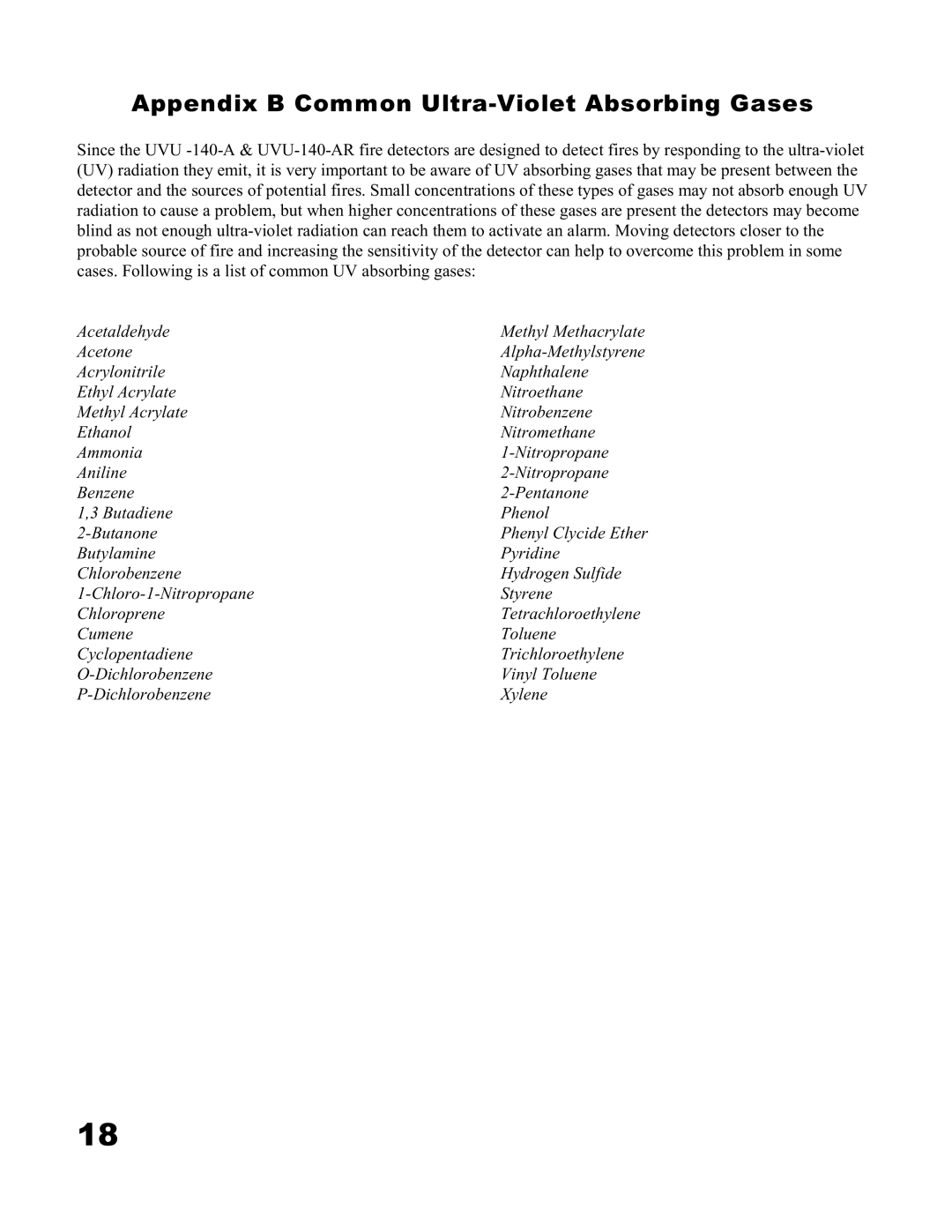Appendix B Common Ultra-Violet Absorbing Gases
Since the UVU -140-A & UVU-140-AR fire detectors are designed to detect fires by responding to the ultra-violet (UV) radiation they emit, it is very important to be aware of UV absorbing gases that may be present between the detector and the sources of potential fires. Small concentrations of these types of gases may not absorb enough UV radiation to cause a problem, but when higher concentrations of these gases are present the detectors may become blind as not enough ultra-violet radiation can reach them to activate an alarm. Moving detectors closer to the probable source of fire and increasing the sensitivity of the detector can help to overcome this problem in some cases. Following is a list of common UV absorbing gases:
Acetaldehyde | Methyl Methacrylate |
Acetone | Alpha-Methylstyrene |
Acrylonitrile | Naphthalene |
Ethyl Acrylate | Nitroethane |
Methyl Acrylate | Nitrobenzene |
Ethanol | Nitromethane |
Ammonia | 1-Nitropropane |
Aniline | 2-Nitropropane |
Benzene | 2-Pentanone |
1,3 Butadiene | Phenol |
2-Butanone | Phenyl Clycide Ether |
Butylamine | Pyridine |
Chlorobenzene | Hydrogen Sulfide |
1-Chloro-1-Nitropropane | Styrene |
Chloroprene | Tetrachloroethylene |
Cumene | Toluene |
Cyclopentadiene | Trichloroethylene |
O-Dichlorobenzene | Vinyl Toluene |
P-Dichlorobenzene | Xylene |
